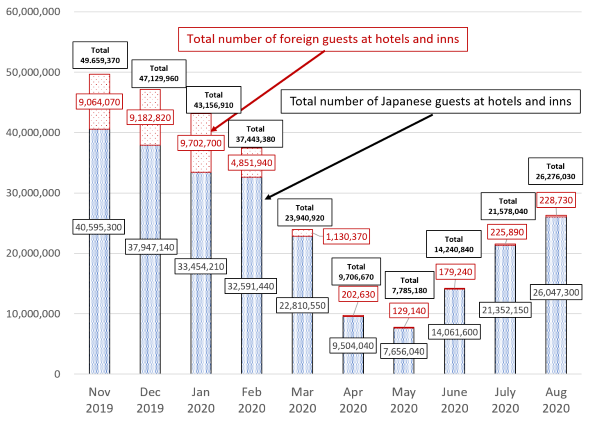Column Finance and the Social Security System 2020.10.15
【Aging, safety net and fiscal crisis in Japan】No.290: The effects of the Go To Travel campaign are beginning to materialize
In this column series, Yukihiro Matsuyama, Research Director at CIGS introduces the latest information about aging, safety net and fiscal crisis in Japan with data of international comparison.
Reflecting the reduction in foreign tourism and the fact that Japanese people are refraining from domestic travel to prevent the spread of COVID-19, the total number of guests in hotels and inns decreased by 84.3% from 49,659,370 in November 2019 to 7,785,180 in May 2020 (Figure 1). In response to this, the government has secured a budget of JPY 1,679 billion for the “Go To Campaign,” which is intended to stimulate demand for travel, eating out, attending events, etc.
The campaign consists of three parts: “Go To Travel,” “Go To Eat,” and “Go To Event,” of which “Go To Travel” has been
implemented since July 22nd. The total number of Japanese guests at hotels and inns increased from 7,656,740 in May to 26,047,300 in August, although the campaign initially excluded Tokyo from the Go To Travel subsidy due to the high number of people infected with COVID-19. As shown in Figure 2, the room occupancy rate in hotels and inns recovered to about half the rate of normal times. In October, the government started to provide subsidies for “Go To Eat” and “Go To Event” in addition to including Tokyo in “Go To Travel.” Future research will focus on whether the campaign can stimulate the economy and control the spread of COVID-19 in a season when COVID-19 and influenza are prevalent at the same time.
Figure 1 Total number of guests at hotels and inns

Source: Japan Tourism Agency
Figure 2 Room occupancy rate of hotels and inns

Source: Japan Tourism Agency
